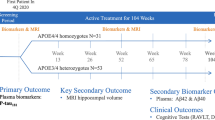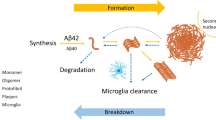Objectives. To determine the efficacy and safety of treatment with Cereton (alfoscerate) in patients with mild cognitive impairment syndrome (MCI) and its effects during and after treatment on phosphatidyl-choline, sphingomyelin, and ceramide (a sphingolipids metabolite) contents and the activity of genes controlling the synthesis of enzymes (sphingomyelinase and ceramidase) involved in the sphingomyelin and ceramide metabolism. Materials and methods. A total of 20 patients (14 women, six men) aged 51–82 (mean 70.3 ± 9.1) years were studied. Patients’ status corresponded to the criteria for diagnosis of MCI syndrome of the anamnestic type. Plasma phosphatidylcholine, sphingomyelin, and ceramide were estimated by thin layer chromatography, while expression of the sphingomyelinase and ceramidase genes was determined using the reverse transcriptase polymerase chain reaction. Results and conclusions. Sharp increases in the contents of phosphatidylcholine and ceramide – hydrolysis products of sphingomyelin – were seen. Expression of the genes (acid sphingomyelinase and ceramidase) controlling ceramide metabolism decreased in most patients during Cereton treatment. Increases in the levels of phosphatidylcholine and decreases in the expression of ceramide metabolism genes during treatment with Cereton and other agents affecting phosphatidylcholine and sphingomyelin metabolism can be used as markers for treatment efficacy.
Similar content being viewed by others
References
S. I. Gavrilova (ed.), Handbook for Geriatric Psychiatry, Pulse, Moscow (2001).
Ya. B. Kalyn and S. I. Gavrilova, “Dynamics of measures of the prevalence of mental disorders in the elderly and old population,” in: Reforms in Mental Health Services: Challenges and Perspectives (1997), pp. 181–189.
N. D. Selezneva, N. M. Mikhailova, Ya. B. Kalyn, I. F. Roshchina, and S. I. Gavrilova, “Studies of the efficacy and safety of Actovegin in elderly patients with mild cognitive impairment syndrome of cerebrovascular origin,” Psikhiatriya, 1, 37–50 (2009).
S. I. Gavrilova, I. V. Kolykhalov, Ya. B. Fedorova, et al., “Potentials for preventive treatment in Alzheimer’s disease: results of a three-year prospective, open, comparative trial of the efficacy and safety of courses of treatment with Cerebrolysin and Cavinton in elderly patients with mild cognitive impairment syndrome,” Zh. Nevrol. Psikhiat., 1, 68–75 (2010).
R. M. Adibhatla and J. F. Hatcher, “Altered lipid metabolism in brain injury and disorders,” Subcell. Biochem., 49, 241–268 (2008), https://doi.org/10.1007/978-1-4020-8831-5_9.
L. Colombaioni and M. Garcia-Gil, “Sphingolipid metabolites in neural signalling and function,” Brain Res. Brain Res. Rev., 46, 328–355 (2004), https://doi.org/10.1016/j.brainresrev.2004.07.014.
A. V. Alessenko and S. V. Gurianova, “Potential role of ceramides in neurodegenerative diseases,” in: Sphingomyelin and Ceramides: Occurrence, Biosynthesis and Role in Disease, NOVA Science Publisher, New York (2015), pp. 21–53.
T. A. Ban, R. M. Panzarasa, S. Borra, D. Del Duchetto, and O. K. Fjetland, “Choline alphoscerate in elderly patients with cognitive decline due to dementing illness,” New Trends Clin. Neuropharmacol., 5, 1–35 (1991).
O. A. Shavlovskaya, “Experience in the use of Cereton (choline alfoscerate) in clinical practice,” Rus. Med. Zh., 19, No. 9, 557–561 (2011).
L. Parnetti, G. Abate, L. Bartorelli, et al., “Multicentre study of 1-alpha-glycerylphosphorylcholine vs ST 200 among patients with probable senile dementia of Alzheimer type,” Drugs Aging, 3, Suppl. 2, 159–164 (1993), https://doi.org/10.2165/00002512-199303020-00006.
E. Aguglia, T. A. Ban, R. M. Panzarasa, S. Borra, and O. K. Fietland, “Choline alphoscerate in the treatment of mental pathology following acute cerebrovascular accident,” Funct. Neurol., 8, Suppl. 3, 5–24 (1993).
P. L. Scapicchio, “Revisiting choline alphoscerate profile: a new perspective role in dementia,” Int. J. Neurosci., 123, 444–449 (2013), https://doi.org/10.3109/00207454.2013.765870.
T. V. Builova, M. E. Glotova, M. E. Khalak, and V. V. Vashkevich, “Experience in the use of Cereton in the process of rehabilitation of patients with hemorrhagic stroke,” Zh. Nevrol. Psikhiat., 5, No. 2, 58–62 (2009).
S. I. Gavrilova, A. V. Alesenko, I. V. Kolykhalov, et al., “Clinical-biological effects of Cereton in the treatment of mild cognitive impairment syndrome of the amnestic type,” Psikhiatriya, 73, No. 1, 5–15 (2017).
T. G. Bligh and W. J. Dyer, “A rapid method of total lipid extraction and purification,” Can. J. Biochem. Physiol., 37, 911–917 (1959), https://doi.org/10.1139/o59-099.
R. D. Duan, “Alkaline sphingomyelinase: an old enzyme with novel implications,” Biochim. Biophys. Acta, 1761, 281–291 (2006), https://doi.org/10.1016/j.bbalip.2006.03.007.
R. W. Jenkins, D. Canals, and Y. A. Hannun, “Roles and regulation of secretory and lysosomal acid sphingomyelinase,” Cell Signal, 21, 836–846 (2009).
Z. F. Yu, M. Nikolova-Karakahian, D. Zhou, et al., “Pivotal role for acidic sphingomyelinase in cerebral ischemia-induced ceramide and cytokine production, and neuronal apoptosis,” J. Mol. Neurosci., 15, 85–97 (2000), https://doi.org/10.1385/JMN:15:2:85.
N. Bartke and Y. A. Hannun, “Bioactive sphingolipids: metabolism and functions,” J. Lipid Res., 50, supplement, 91–96 (2009), https://doi.org/10.1194/jlr.R800080-JLR200.
M. Maceyka, K. B. Harikumar, S. Milstein, and S. Spiegel, “Sphingosine-1-phosphate signaling and its role in disease,” Trends Cell Biol., 22, 50–60 (2012), https://doi.org/10.1016/j.tcb.2011.09.003.
C. Mao and L. V. Obeid, “Ceramidases: regulators of cellular responses mediated by ceramide, sphingosine, and sphingosine-1-phosphate,” Biochim. Biophys. Acta, 1781, 424–434 (2008), https://doi.org/10.1016/j.bbalip.2008.06.002.
P. Katsel, C. Li, and V. Haroutunian, “Gene expression alterations in the sphingolipid metabolism pathways during progression of dementia and Alzheimer’s disease: A shift toward ceramide accumulation at the earliest recognizable stages of Alzheimer’s disease?” Neurochem. Res., 32, 845–856 (2007), https://doi.org/10.1007/s11064-007-9297-x.
Author information
Authors and Affiliations
Corresponding author
Additional information
Translated from Zhurnal Nevrologii i Psikhiatrii imeni S. S. Korsakova, Vol. 117, No. 6, Iss. 1, pp. 21–27, June, 2017.
Rights and permissions
About this article
Cite this article
Alesenko, A.V., Gavrilova, S.I., Gutner, U.A. et al. Studies of the Efficacy of Cereton in Mild Cognitive Impairment of the Amnestic Type Based on Testing Lipid Markers. Neurosci Behav Physi 49, 147–152 (2019). https://doi.org/10.1007/s11055-018-0708-z
Published:
Issue Date:
DOI: https://doi.org/10.1007/s11055-018-0708-z




